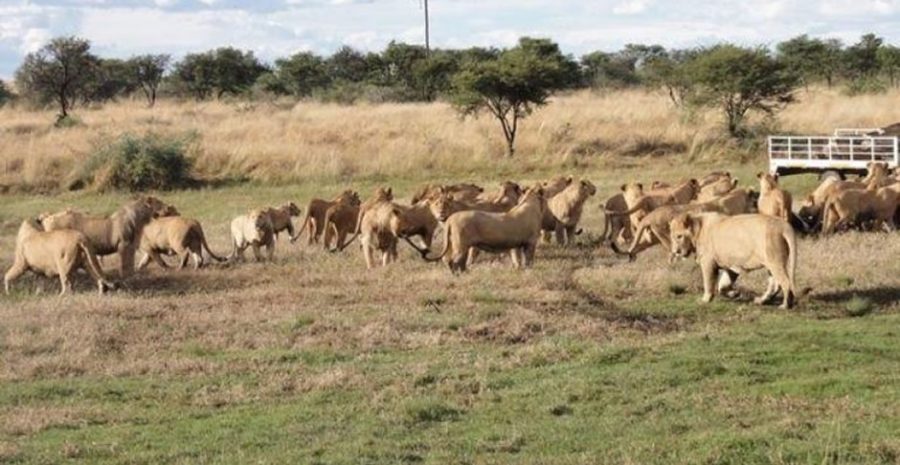
No Trust in South Africa’s Lion Farming and Lion Bone Trade
In September 2016, CITES* met in Johannesburg for CoP17 – a meeting of member states to clarify and review trade in endangered species. One particular talking point was met with shock and condemnation from the conservation world – South Africa would be permitted to legally trade in captive bred lion bones – against the general […]
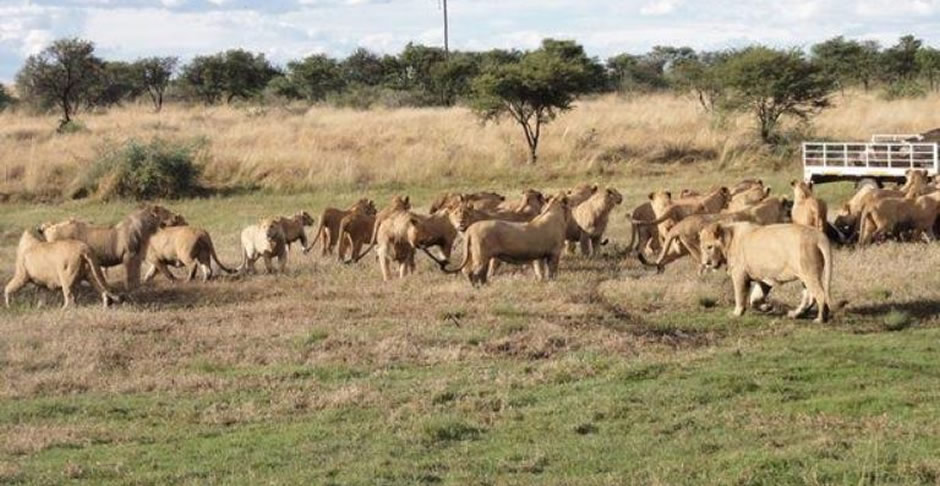
In September 2016, CITES* met in Johannesburg for CoP17 – a meeting of member states to clarify and review trade in endangered species. One particular talking point was met with shock and condemnation from the conservation world – South Africa would be permitted to legally trade in captive bred lion bones – against the general feeling of various NGOs and other African countries.
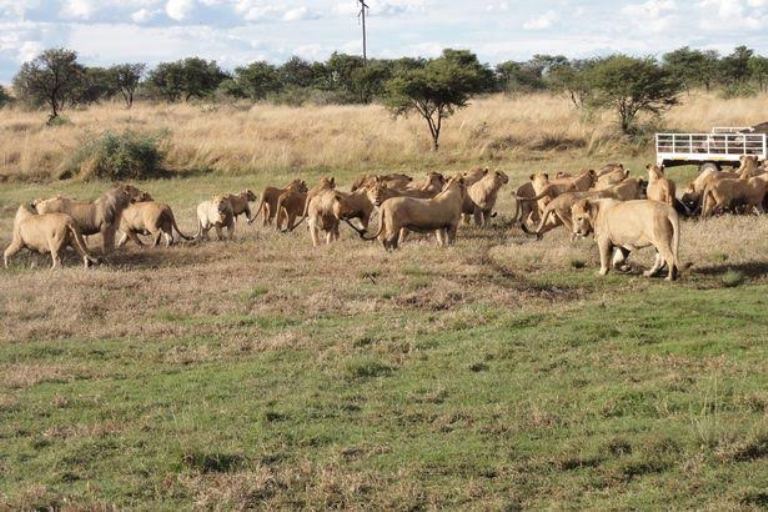
The lion bones are exported to Asia and feed the Traditional Chinese Medicine market where these lion bones are used as a replacement for tiger bones in tiger bone wine and tiger ‘cake’.

Following a CITES (*Convention on International Trade in Endangered Species of Wild Fauna and Flora) stakeholder feedback session on 18 January, after the Department of Environmental Affairs (DEA) announced that they would be seeking a captive lion bone trade export quota of 800 lion skeletons, the DEA has invited the public to make written submissions on the quota. (View the DEA’s media release here.)
Non-Profit NPO Captured In Africa (CIA) Foundation – kindly takes us through the DEA’s media release below:
Firstly, CIA Foundation applauds South Africa’s DEA for their approach and tackling of illegal wildlife crime, trade, poaching, illegal hunting and other related activities.
“Our team understand the magnitude and complexities of such issues, which is certainly not an easy task,” says CIA Foundation.
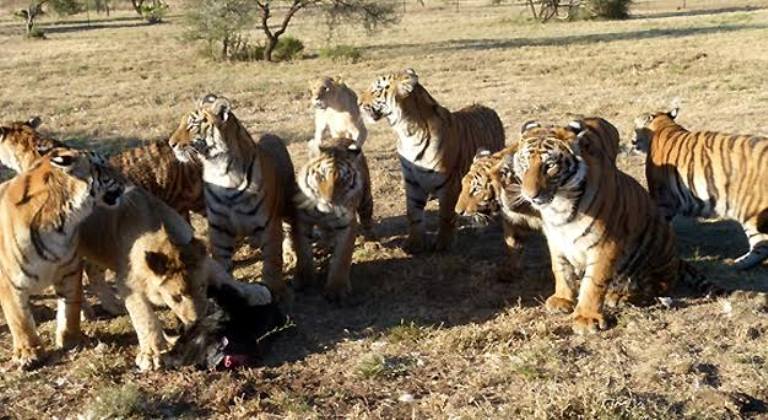
“However, CIA Foundation believe the DEA to be making a grave error in their approach to legal trade in lion bones, one which is based primarily on assumptions, with no clear research nor science and ignoring clear, unanimous research from the conservation and economic industry.
“The DEA’s proposal appears to be complicating what can and should be a much sterner approach to combating wildlife crime, including the trade of endangered species and derivatives.
“As part of our comment to the DEA, we feel we must first revert to the Department of Environment’s OWN media release, concerning their lion bone quota proposal and subsequent request for public comment. Our full comment will be made available online this week.”
Below is exact quotes from the DEA’s media release, followed by CIA Foundation’s clarification of some irregularities and misinformation which may help better understand this “absurd quota”:
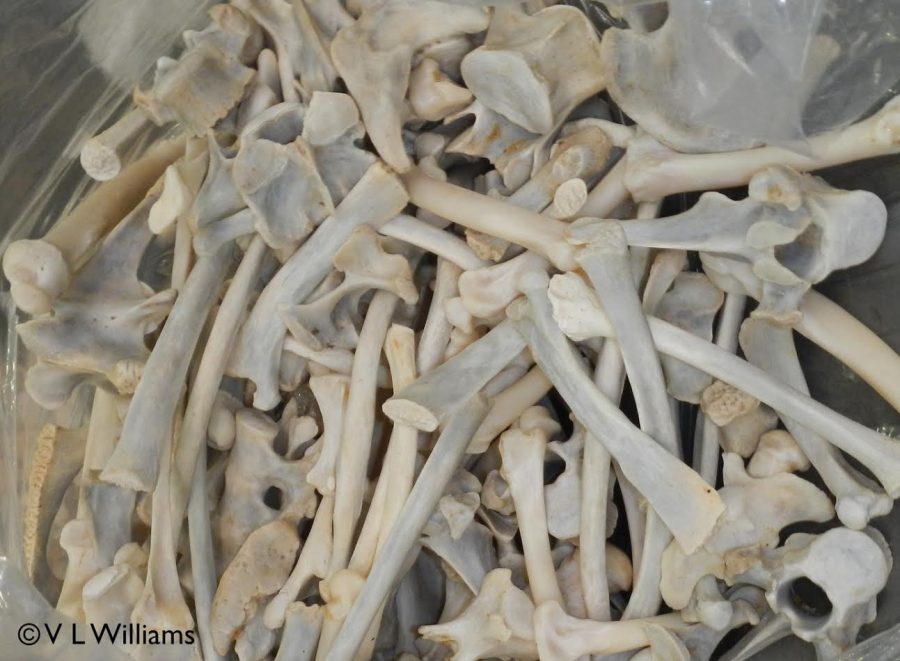
DEA Quote
“An export permit shall only be granted for an Appendix II species when a Scientific Authority of the State of export has advised that such export will not be detrimental to the survival of that species.”
Why?
Captured In Africa Foundation believe that such export permits must also take into consideration the global movement towards demand reduction campaigns and the emphasis & agreed approaches concerning a no trade policy on Elephant Ivory and Rhino Horn.
South African Government are only now implementing research into Lion bones and their affect or otherwise on wild Lion populations? Therefore, and crucially, there is currently NO scientific authority on South Africa’s Lion bone exports, thus a ZERO export quota should be implemented which may risk the Africa Lion population.”
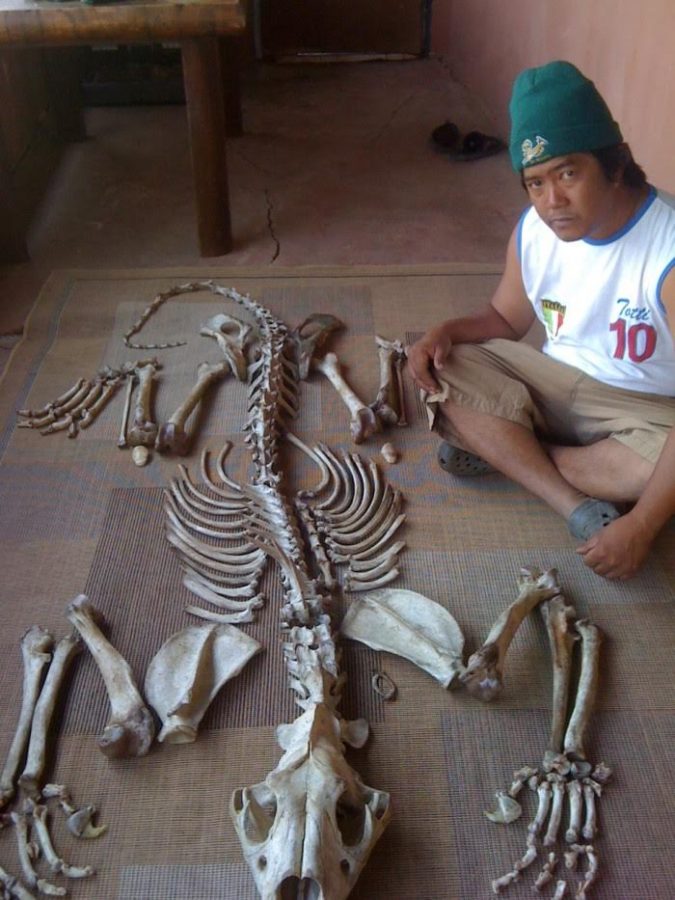
Quote
“One of the main concerns is that lion bones may be illegally sourced from wild lion populations if the trade in the bones originating from captive bred lions is prohibited.”
Why?
This is another false assumption with no fact or scientific evidence to support such risky endeavours. Poaching of wild lions for their bones is already a great and known risk.
In our experience, the above statement is misleading and only initiated by the lion farming and hunting industry to aid scaremongering. For the South African Government to perpetuate this myth is discreditable to genuine, scientific conservation efforts.
“An emerging threat is trade in bones and other body parts for traditional medicine, both within Africa and in Asia (IUCN 2006a, b; Riggio et al. 2013)”, IUCN Red List of Endangered Species
It is extremely difficult to differentiate between the bones of wild & captive lions. There is major concern that wild Lion bones could be smuggled as captive specimens on CITES permits and documentation.”
Quote
“It was noted that when the trade in tiger bone was banned; the trade shifted and bones were sourced from South Africa”
Why?
The above statement is NOT a positive in favour of the Departments case for a Lion Bone quota, it should act as a reminder that when allowing trade, that trade can be exploited and therefore increase, further jeopardising such species – case in point being South Africa’s lion bone trade since 2008 and the resulting increase in exports.
Following declining numbers of Asian and Asiatic Tigers, poachers turned to Africa when Lions which are seen as a suitable replacement for tiger bone.
The above DEA statement vindicates the fact that, Asian nationals are sourcing Lion Bones to replace Tiger Bones – captive tigers were bred on mass whilst wild tiger populations were still targeted and reduced – the same correlation applies to lions in Africa, with captive breeding running parallel to reducing numbers of wild lions.
If South Africa joined the global effort to reduce demand and conserve, then Lions would not be in danger from the resulting increased demand for Lion Bones from South Africa – whether legally (captive) or illegally (wild) sourced.
Increased incidents of captive lions being poached (possibly for Muti purposes) in South Africa is also of concern. However we are seeing captive lions poached 2-6 lions at a time, not in line with Muti poachings, so are these captive lion poachings feeding the market for lion claws, teeth and other parts?
Lion farming and the lion bone trade should be restricted immediately to allow due & proper understanding of this spike in captive poaching.
The captive farming of Tigers in China quickly became out of control, whilst they lost tigers in the wild… sadly this is repeating in South Africa. Yet the Government and CITES allow it to manifest?”
Quote
“A well-regulated trade will enable the Department to monitor a number of issues relating to the trade, including the possible impact on the wild populations.”
Why?
False & presumptive based on no scientific data concerning trade on Lion Bone – an already endangered species should not be used in such experiments. As seen with legal trade Rhino Horn & Elephant Ivory, proper monitoring of such an industry is not possible, with both Horn & Ivory being traded legally AND illegally through existing avenues by which the legal trade was able to operate. Applying a legal channel permits an illegal abuse of the system.
Legal Ivory retailers in Hong Kong, using loopholes to sell illegally sourced Ivory – http://wildaid.org/news/illusion-control-hong-kongs-legal-ivory-trade
VICTORY: In December 2016, the Chinese Government rightfully decided to ban the legal Ivory Trade.
The Department of Environmental Affairs believe they can responsibly & accurately control the already out of control lion farming and lion bone industry? China believed that with Elephant Ivory until they were proven wrong. What will it take for the South African Government to realise this with lions?
How can the South African Government regulate trade when the Government cannot control the products’ (lion skeleton) end destination? This is surely a total abandonment of responsibility?
“The Asian side of the trade chain is less transparent and understood, and little is known about the fate of Lion bones once they reach East–Southeast Asia. Since wildlife trade often makes use of the same established networks and supply lines, the Lion bone trade may have piggy-backed on existing wildlife routes in Lao PDR, Viet Nam, China, Thailand and possibly Myanmar, and is worthy of further investigation. If Lion bones are being traded between countries in East–Southeast Asia, then the trade is presumed to be mainly illicit given the absence of CITES export-import permit records to legitimize the trade.” – Bones of Contention, WildCRU/TRAFFIC
International Lion Bone Trade, according to respected authority Karl Ammann:
The Rhino Horn Trade comparison – “Supposedly one of the main objectives of South Africa discussing the possibility of legalizing the rhino horn trade is to flood the market with stores of rhino horn which will cause the price (currently U$ 60000 per kilo) to crash, decreasing the incentive for poachers.
This is the opposite of what we have found in our investigations into the trade in tiger and lion bones – the additional supply from captive farming, and the introduction of imported lion skeletons – which now exceeds by far the supply from the remaining wild tiger population – has not decreased the price, in fact the price of tiger carcasses has increased drastically in the last three years.”
Karl Ammann, ‘Of tiger and lion bones and the legalizing of the rhino horn trade’
http://karlammann.com/pdf/swara-tiger-rhino-piece.pdf
What is the South African Government’s conservation purpose for legally trading Lion Bones? When it is clear that this will have a detrimental affect on wild lions, increased captive Lion breeding, negatively impacting demand reduction campaigns for wildlife products and trans-national organised crime.
Quote
“The South African National Biodiversity Institute (SANBI) will also initiate a study to monitor the lion bone trade in South Africa. The study will aim to increase the understanding of the lion bone trade in South Africa and the captive lion breeding industry”
Why?
Why have South Africa not initiated such studies previously, when the lion bone and captive lion industry isn’t new?
This proves that these industries have been allowed to operate and expand under no scientific research and under no conservation value for some time .
South Africa state in the quote above that they wish to “increase the understanding of the lion bone trade in South Africa” – yet importantly make no mention of understanding the Lion bone trade INTERNATIONALLY, a critical component of allowing any quota. Therefore a ZERO QUOTA is the only logical stance for CITES to take.
To allow captive breeding of lions and captive lion bone exports to continue with a quota, without evidence of their merits, is flawed.
Other Key Arguments
R20,000 per lion skeleton (x800 proposed quota), brings a total revenue of R14 Million. However the South African Government would only see a portion of that if anything, with the majority of that money going to lion farmers – perhaps only R4 Million – is this sum really worth it?
In comparison, South African tourism revenue for 2015 was R91.8 Billion
African Lion population is an estimated 20,000 in the WILD
South Africa has an estimated 8,000 lions in CAPTIVITY
Lions have been listed as endangered on CITES Appendix II since 1975 when there were approximately 100,000 lions in Africa. Appendix II listing allows “sustainable use” of wildlife through trade. What’s sustainable about losing 80,000 lions since 1975?
IUCN listed African Lions as Vulnerable in 1996, with no change for 20 years
The IUCN World Congress in 2016 concluded that “captive breeding of lions has not been identified as a conservation action” – so why are we allowing an export quota for captive bred lion bones with no conservation value?
Estimated 2,400 – 3,600 lions are bred in South Africa every year
Cub petting facilities help lion farmers externalise the cost of breeding lions, deceiving tourists and volunteers who come to Africa in the belief that they are helping
20,000 lions left in the wild – South African lion farmers have likely bred that many lions or more just in captivity for hunting & lion bone trade
Ending Questions
Why do CITES allow and permit such Lion Bone Trade, when there is categorically no scientific evidence of value nor support to conservation?
Do the South African Government have documented proof of economic value to South Africa and South Africa’s people, through any of its historic Lion Bone Trade exports?
How does South Africa’s proposed Lion Bone Trade quota assist in demand reduction campaigns the rest of the world is tackling?
If the Ivory market was proven to be suspect to loopholes and blatant disobedience to legalities concerning trade, how does South Africa hope to avoid such issues with Lion Bone Trade?
How does South Africa contribute to the overwhelming majority in favour of ending captive lion breeding, canned hunting, international illegal wildlife trade?
MORE
For more information on Captured In Africa Foundation, you can visit their website – www.capturedinafricafoundation.com
To join CIA Foundation, along with other non-profits, NGOs, conservationists, economists and members of the public – send your written comments to Mpho Tjiane at the DEA ON or BEFORE THURSDAY 2 Feb: mtjiane@environment.gov.za
The DEA’s media release can be read here.
Captured In Africa Foundation is a registered South African non-profit organisation (NPO 176-604), established to support ongoing efforts for the protection, rescue and/or relocation of vulnerable and at risk big cats, both in the wild and exploited captive situations. Projects established and supported by the foundation include ongoing lion/big cat rescues and relocations, anti-poaching units, human-wildlife conflict management, educational programs and tourism campaigning & initiatives.
